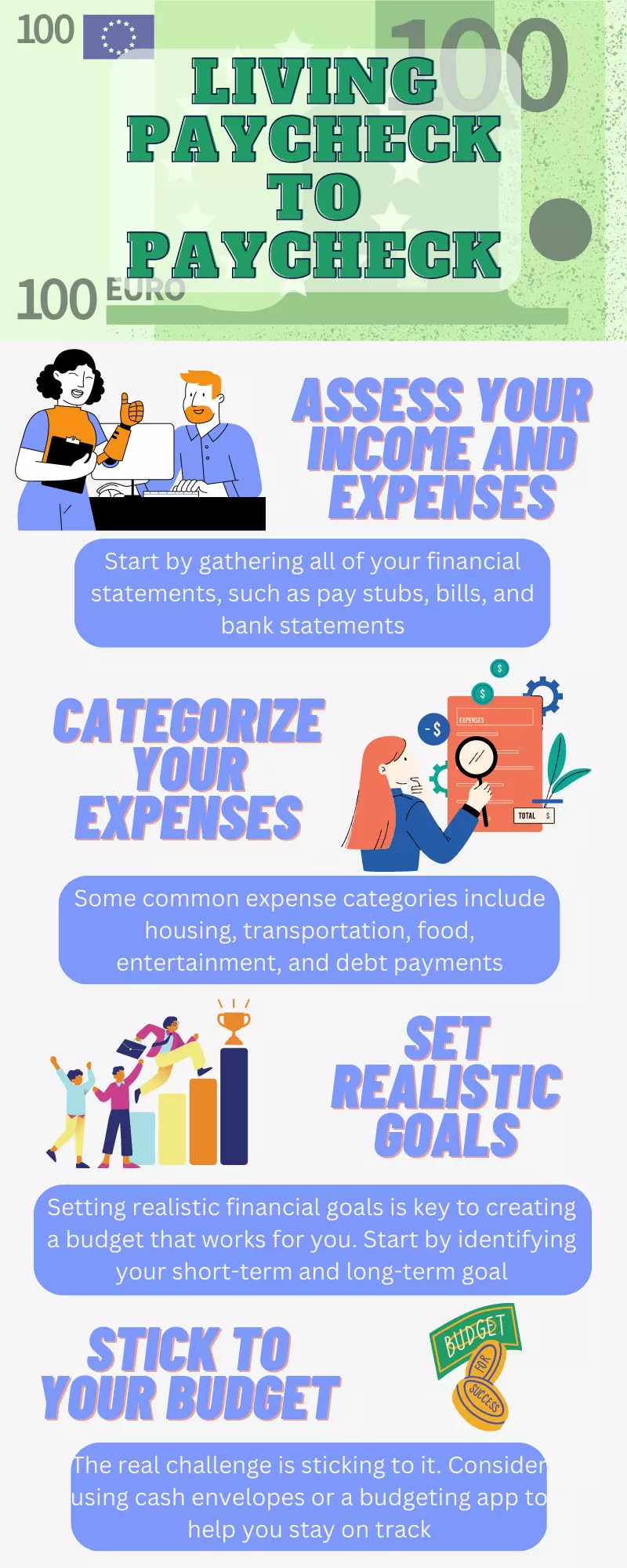At some point in our lives, most of us have experienced the struggle of living paycheck to paycheck. It can be stressful and overwhelming, but creating a budget is a crucial first step towards taking control of your finances.
In this guide, I’ll show you how to create a budget that works for your unique situation and helps you achieve your financial goals.

Assess Your Income and Expenses
The first step in creating a budget is to assess your income and expenses. Start by gathering all of your financial statements, such as pay stubs, bills, and bank statements. Then, make a list of all of your income sources and all of your monthly expenses.
Be sure to include all of your bills, such as rent, utilities, and any debt payments. Don’t forget to include your variable expenses, such as groceries, transportation, and entertainment.
Categorize Your Expenses
Once you have a clear picture of your income and expenses, it’s time to categorize your expenses. This will help you identify areas where you may be overspending and areas where you can cut back.
Some common expense categories include housing, transportation, food, entertainment, and debt payments. Consider using a budgeting app or software to help you categorize your expenses and track your spending.
Set Realistic Goals
Setting realistic financial goals is key to creating a budget that works for you. Start by identifying your short-term and long-term goals.
Short-term goals may include paying off a credit card or saving up for a vacation.
Long-term goals may include buying a house or saving for retirement. Once you have identified your goals, assign a dollar amount to each one and set a timeline for achieving them.
Create a Plan
Now that you have a clear understanding of your income, expenses, and goals, it’s time to create a plan. Start by identifying areas where you can cut back on expenses.
This may include reducing your grocery bill, canceling unnecessary subscriptions, or finding ways to save on transportation costs.
Next, allocate your remaining funds towards your financial goals. Consider automating your savings by setting up automatic transfers to a savings account or retirement fund.
Stick to Your Budget
Creating a budget is only the first step. The real challenge is sticking to it. Consider using cash envelopes or a budgeting app to help you stay on track.
Review your budget regularly and adjust it as necessary. Remember, it’s okay to make mistakes and have setbacks. The important thing is to keep moving forward towards your financial goals.
Conclusion
Creating a budget when living paycheck to paycheck may seem daunting, but it’s a crucial step towards achieving financial stability.
By assessing your income and expenses, categorizing your expenses, setting realistic goals, creating a plan, and sticking to your budget, you can take control of your finances and achieve your financial goals. Don’t let the stress of living paycheck to paycheck hold you back. Take charge of your finances today!





